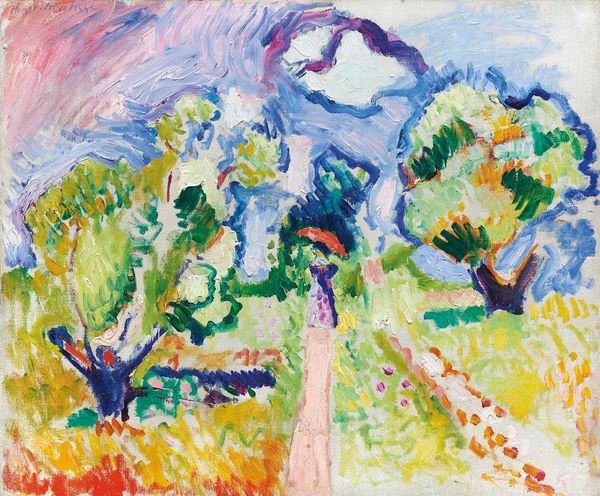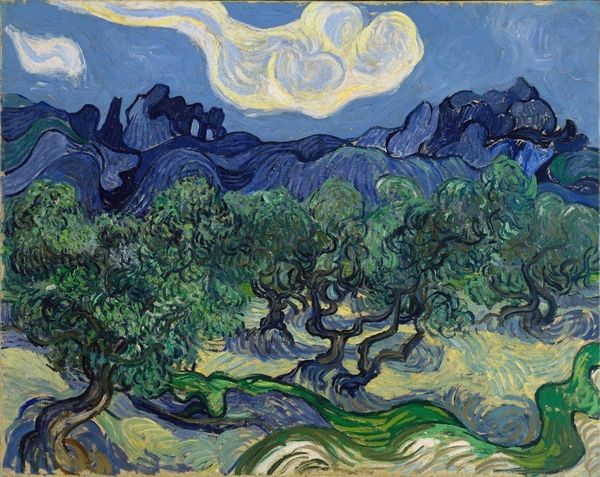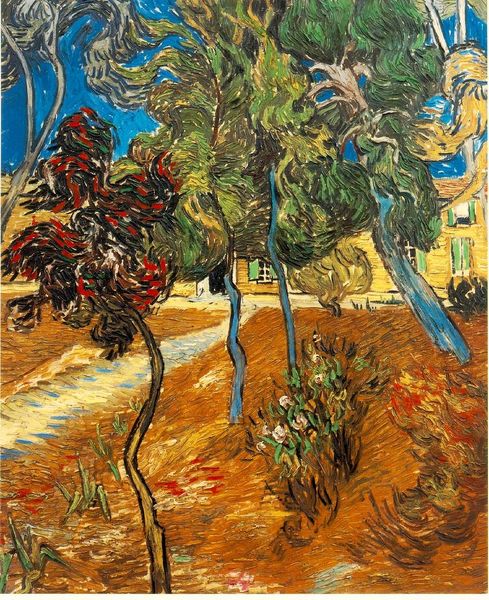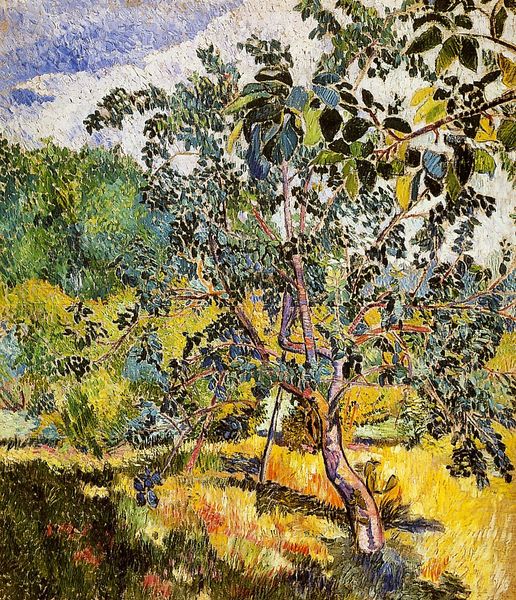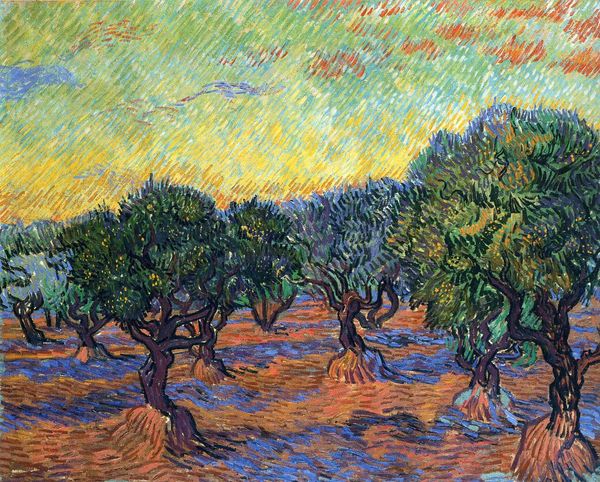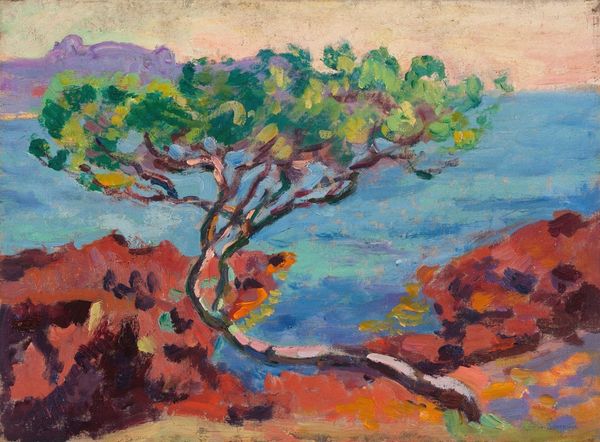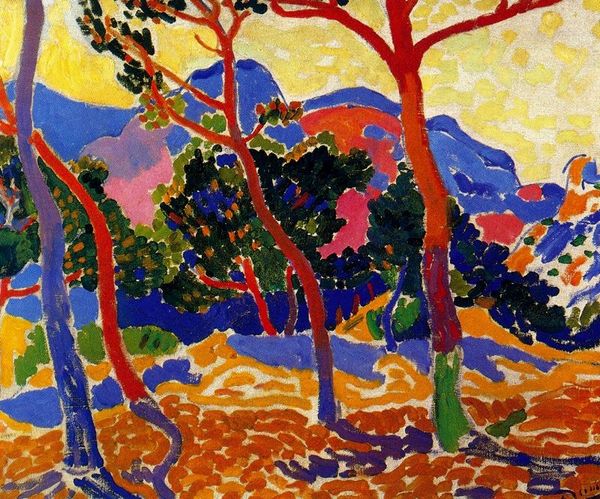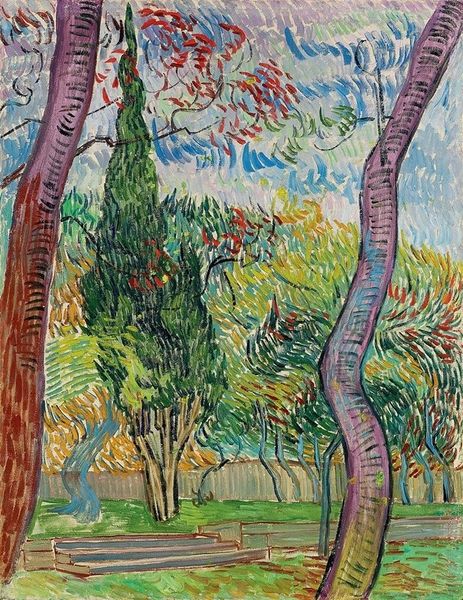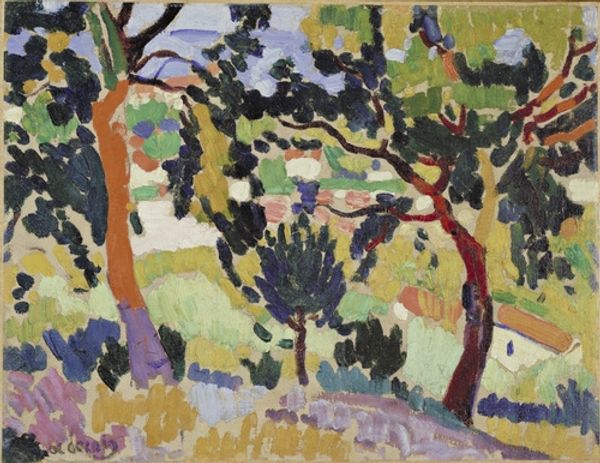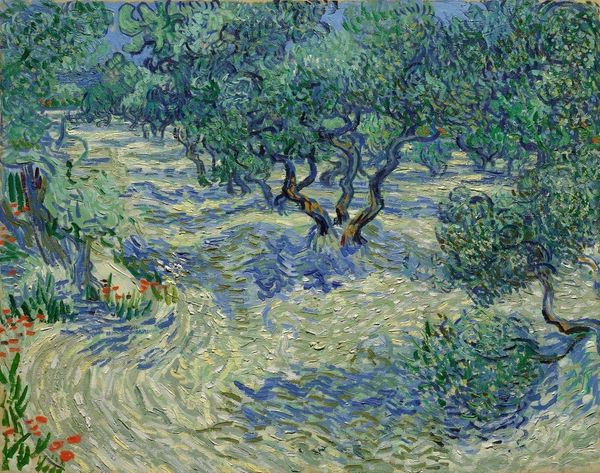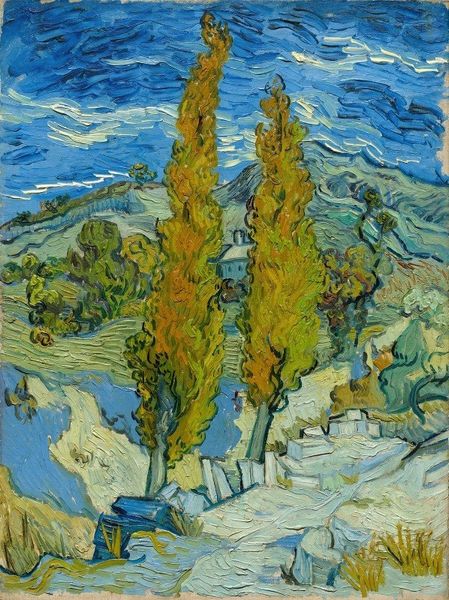
painting, oil-paint
#
fauvism
#
fauvism
#
painting
#
oil-paint
#
landscape
#
modernism
Copyright: Public domain US
Editor: We're looking at "Mountains at Collioure," painted in 1905 by André Derain, using oil paints. The landscape is bursting with unexpected color combinations – like red tree trunks and bright blue mountains! It's incredibly striking. What is your perspective on this bold departure from traditional landscape painting? Curator: The vivid, non-naturalistic color is, of course, a hallmark of Fauvism. This painting signifies a specific moment, early 20th century, when artists directly challenged the academic conventions around representing nature. Think about the art world that shaped Derain: Salon exhibitions valuing realistic depictions, conservative artistic institutions. This painting explodes all of that. How might a rebellious artist use such radical colour? Editor: As a means to defy those institutions? A way of shocking viewers into seeing the world differently? Curator: Exactly. This use of "arbitrary color" - that's a phrase to remember - wasn't about depicting visual reality. It was about conveying emotion, expressing the artist’s subjective experience of the landscape, and rejecting the authority of the academy. What impact might paintings like this have had on the art market? Editor: It probably wasn’t immediately embraced. These Fauvist works would’ve shaken the foundations of taste at the time. They might have been considered too radical for serious collectors. Curator: Right, and think about who *did* buy these works early on: progressive collectors, intellectuals, other artists who also felt marginalized by the mainstream. It points to the social role of avant-garde art in fostering alternative communities. Also, where do we see this work shown, how it gets shown, and why that's so? Editor: I now have a clearer grasp of the sociopolitical forces that propelled Fauvism. It was more than just an aesthetic choice; it was a statement. Curator: Precisely. Art is always shaped by—and reacting to—its context.
Comments
No comments
Be the first to comment and join the conversation on the ultimate creative platform.
